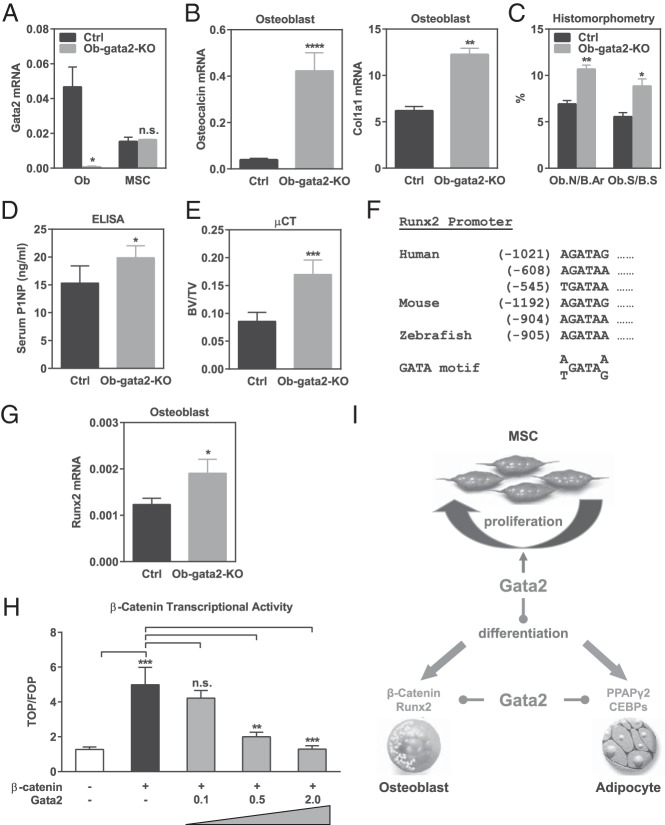Figure 4.
Gata2 in osteoblast lineage suppresses osteoblastogenesis. A, Gata2 expression was significantly diminished in osteoblasts (left) but not MSCs (right) derived from the bone marrow of Ob-gata2-KO mice (n = 3). B, Ex vivo bone marrow osteoblast differentiation was enhanced for Ob-gata2-KO mice compared with littermate controls, shown by the higher expression of osteoblast markers such as osteocalcin and Col1a1 (n = 3). C, Femurs from Ob-gata2-KO mice displayed higher osteoblast number/bone area (Ob.N/B.Ar) and osteoblast surface/bone surface (Ob.S/B.S) (n = 6). D, ELISA analysis showed that serum bone formation marker P1NP was higher in Ob-gata2-KO mice (n = 6). E, μCT analysis of the trabecular bone in proximal tibiae showed that Ob-gata2-KO mice exhibited higher bone mass (n = 4). BV/TV, bone volume/tissue volume ratio. F, Multiple GATA binding motifs were identified in the Runx2 promoter in human, mouse, and zebrafish. Examples are shown. G, Runx2 expression was increased in osteoblasts differentiated from the bone marrow of Ob-gata2-KO mice (n = 3). H, Gata2 dose dependently suppressed β-catenin activity in a transient transfection and TOP/FOP reporter assay (n = 6). I, A working model for how Gata2 regulates mesenchymal cell fate. Gata2 in the early mesenchymal lineage promotes MSC proliferation and suppresses terminal differentiation. Gata2 in the committed osteoblast and adipocyte lineages also inhibit differentiation by suppressing key transcription factors: in the osteoblast lineage, Gata2 down-regulates β-catenin and Runx2; in the adipocyte lineage, Gata2 attenuates PPARγ2 and CEBPs. Ctrl, control.

